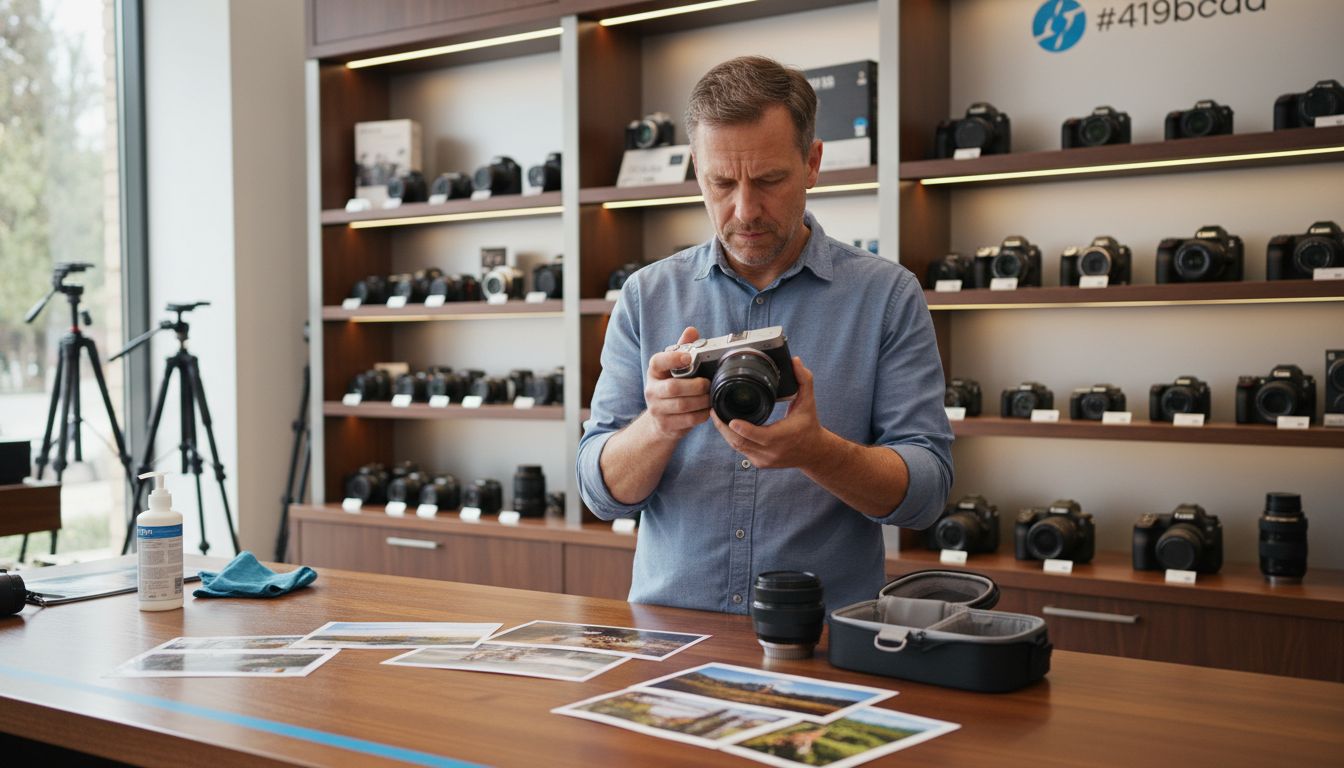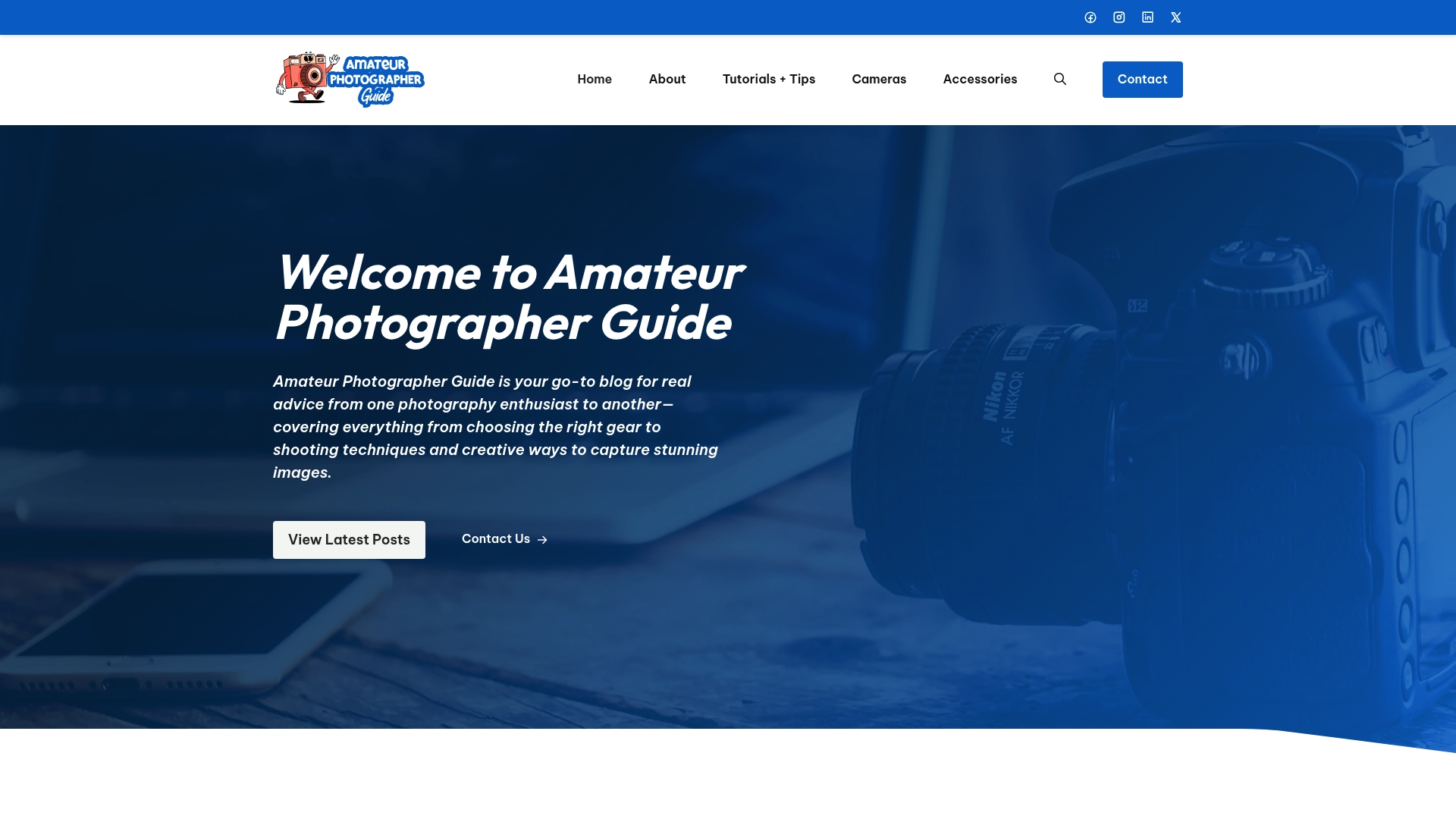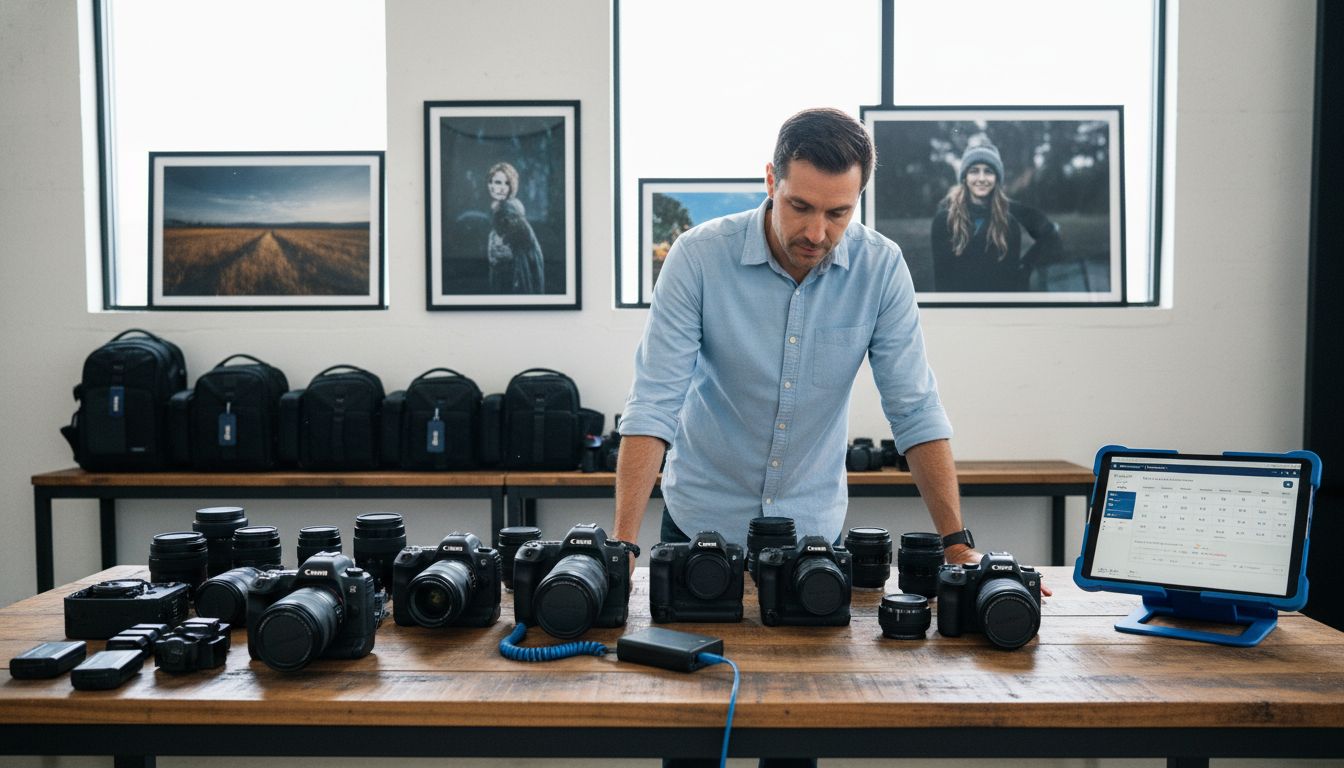Table of Contents
- Quick Summary
- Step 1: Assess Your Photography Needs
- Step 2: Set Your Budget and Prioritize Features
- Step 3: Compare Camera Body Types and Sensor Sizes
- Step 4: Evaluate Lens Options for Your Style
- Step 5: Test and Verify Gear Compatibility and Usability
- Master Your Camera Gear Choices With Expert Guidance
- Frequently Asked Questions
- Recommended
This blog post may contain affiliate links. As an Amazon Associate I earn from qualifying purchases.
Most new photographers are surprised to learn that nearly 60 percent regret at least one gear purchase within their first year. Sorting through camera bodies, lenses, and endless accessories quickly becomes confusing for anyone just starting out. The right approach can save you money, frustration, and help you build a setup that fits your style and skill level from the very beginning. This guide walks you through each key decision, making your next camera investment a smarter and more confident one.
Quick Summary
| Key Point | Explanation |
|---|---|
| 1. Assess photography needs first | Identify your preferred style to choose appropriate gear and avoid overspending. |
| 2. Set a practical budget range | Allocate funds wisely: 40% for the camera body and 60% for lenses, as lenses impact quality significantly. |
| 3. Understand camera body types | Choose between DSLR and mirrorless based on your shooting style and preferences, focusing on advantages each offers. |
| 4. Evaluate lens characteristics | Select lenses according to your photography style; consider focal length and aperture for specific performance needs. |
| 5. Test equipment for comfort and usability | Hands-on testing ensures compatibility and comfort; it’s essential for making an informed purchase decision. |
Step 1: Assess Your Photography Needs
Before investing in camera gear, you need a strategic roadmap tailored to your specific photography goals. Understanding your unique requirements will prevent unnecessary spending and help you select equipment perfectly matched to your creative vision.
Start by honestly evaluating what type of photography excites you most. Are you drawn to landscape photography requiring wide angle lenses and sturdy tripods? Do you want to capture sports action with fast telephoto lenses? Or perhaps you dream of portrait photography demanding prime lenses with beautiful bokeh effect? Each photography genre demands different gear strategies. For instance, wildlife photographers need different equipment compared to wedding photographers.
Your personal skill level matters immensely when selecting gear. Beginners should prioritize versatile equipment allowing room for growth. An entry level DSLR with a standard zoom lens offers more flexibility than specialized expensive equipment. Consider your budget alongside your ambition. Professional grade cameras might seem tempting but could overwhelm new photographers. Check out our guide on choosing a camera for amateur photographers to understand what matches your current abilities.
Pro tip: Always test equipment before purchasing. Many camera stores allow trial periods or rental options. This hands-on approach prevents buyer’s remorse and ensures your new gear feels comfortable and intuitive. Your perfect camera should feel like a natural extension of your creative vision.

Step 2: Set Your Budget and Prioritize Features
Budget planning is the critical bridge between your photography dreams and practical gear selection. Your financial boundaries will directly influence the quality and capabilities of camera equipment you can acquire.
Start by establishing a realistic budget range that balances your ambitions with financial practicality. Professional cameras can cost thousands of dollars while entry level models begin around 300 to 500 dollars. Break down your budget into key components: camera body, lenses, accessories like memory cards and extra batteries. Learn more about photography gear essentials in our beginner guide which helps new photographers understand necessary investments.
When prioritizing features, focus on specifications most relevant to your photography style. Sports and wildlife photographers might prioritize fast autofocus and high burst rates. Portrait photographers need excellent low light performance and beautiful color rendering. Landscape photographers typically value high resolution sensors and dynamic range. Research suggests comparing large sensor cameras can help budget conscious photographers find exceptional value without overspending. Consider used or refurbished professional grade equipment as an intelligent way to access higher quality gear at more affordable price points.
Pro tip: Allocate approximately 40% of your budget for the camera body and 60% for quality lenses. Lenses typically offer longer term value and significantly impact image quality more than camera bodies alone.
Step 3: Compare Camera Body Types and Sensor Sizes
Understanding camera body types and sensor sizes is crucial for selecting gear that matches your photography goals. This knowledge will help you make an informed decision about which camera system will deliver the best results for your specific needs.
The two primary camera body types are DSLR and mirrorless cameras. Each offers unique advantages depending on your photography style. DSLRs feature a traditional mirror mechanism that reflects light to an optical viewfinder. Mirrorless cameras eliminate this mirror system, resulting in more compact bodies and potentially faster shooting speeds.
![]() Discover the pros and cons of DSLR versus mirrorless cameras in our comprehensive guide to understand which might suit your shooting preferences.
Discover the pros and cons of DSLR versus mirrorless cameras in our comprehensive guide to understand which might suit your shooting preferences.
Sensor size plays a critical role in image quality. Larger sensors typically capture more light and detail, producing superior images in challenging conditions. Common sensor sizes include full frame (equivalent to 35mm film), APS-C (smaller sensor found in many consumer cameras), and micro four thirds. Landscape photographers often prefer full frame sensors for their exceptional dynamic range and wide field of view. Sports and wildlife photographers might choose APS-C sensors for their crop factor advantage, which effectively increases telephoto lens reach.
Pro tip: Consider how sensor size impacts lens compatibility and depth of field. Smaller sensors require different lens calculations and can create a more pronounced depth of field, which might be advantageous or limiting depending on your photography style.
Step 4: Evaluate Lens Options for Your Style
Selecting the right lens is like choosing the perfect paintbrush for an artist. Your lens determines how you capture and interpret the world through your camera, making it a critical decision for your photographic journey.
Understand the key lens categories that match different photography styles. Wide angle lenses between 14mm and 35mm work brilliantly for landscape and architectural photography, capturing expansive scenes with remarkable depth. Telephoto lenses ranging from 70mm to 300mm are ideal for wildlife, sports, and portrait photography where you need to zoom in on distant subjects. Learn more about how different focal lengths transform your photography in our comprehensive guide to understand which lens will unlock your creative potential.
Consider additional lens characteristics beyond focal length. Aperture determines light gathering capability and depth of field. Lenses with wider apertures like f1.8 or f2.8 perform exceptionally in low light and create beautiful background blur. Prime lenses offer superior image quality with fixed focal lengths, while zoom lenses provide more versatility. Large sensor fixed lens cameras can offer remarkable image quality in compact packages, making them attractive for photographers seeking portability without compromising performance.
Pro tip: Always test lenses before purchasing. Rent or borrow different focal lengths to understand how they complement your shooting style and creative vision. A lens that feels perfect for one photographer might feel awkward for another.
Step 5: Test and Verify Gear Compatibility and Usability
Verifying gear compatibility and usability is the final checkpoint in your camera selection journey. This step ensures that your carefully chosen equipment works seamlessly together and feels comfortable in your hands.
Start by checking lens mount compatibility across your camera body and potential lenses. Different camera manufacturers use unique lens mount systems that may limit your lens options. Mirrorless systems often provide more adapter flexibility compared to traditional DSLR cameras. Some photographers use mount adapters to expand their lens choices, but this can impact autofocus performance and image quality. Understanding camera system compatibility is crucial for making informed gear decisions, so research your specific camera ecosystem carefully.
Physical ergonomics matter as much as technical specifications. Handle the camera in person to assess weight distribution, button placement, and overall comfort. Consider factors like grip size, menu interface intuitiveness, and how the camera feels during extended shooting sessions. Professionals recommend spending at least 15 to 20 minutes handling potential gear to truly understand its usability. Pay attention to how quickly you can adjust settings, the responsiveness of touchscreens, and the clarity of electronic viewfinders.
Pro tip: Many camera stores offer rental programs. Take advantage of these to test equipment in real world conditions before making a significant investment. Your perfect camera should feel like a natural extension of your creative vision.
Master Your Camera Gear Choices With Expert Guidance
Choosing the right camera gear can feel overwhelming when faced with choices about sensor size, lens types, and body styles. You want gear that feels like an extension of your creativity rather than a source of frustration. This article highlighted key challenges such as balancing budget priorities, understanding technical terms like APS-C or prime lenses, and testing usability before committing to a purchase.

Take control of your photography journey today by exploring the Amateur Photographer Guide where we break down complex concepts into simple steps. Whether you are just starting with a standard zoom lens or aiming for professional results with full frame cameras, our tutorials and buying advice will empower you to make confident decisions without the confusion. Visit us now and discover practical tips, detailed gear reviews, and actionable insights crafted specifically for hobbyists passionate about capturing stunning photos.
Frequently Asked Questions
How do I assess my photography needs when selecting camera gear?
Begin by evaluating which type of photography excites you most, such as landscapes, sports, or portraits. Consider your personal skill level, budget, and the specific features needed for your desired photography style.
What is an appropriate budget to set for camera gear?
Establish a budget that balances your photography ambitions and financial reality, typically ranging from $300 to thousands for professional equipment. Break down your budget into key components like the camera body and lenses, aiming for 40% for the camera and 60% for quality lenses.
How do I compare camera body types and sensor sizes?
DSLR and mirrorless cameras are the two primary types; choose based on your shooting style. Familiarize yourself with different sensor sizes, such as full frame or APS-C, to ensure you select the best option for your photographic goals like depth of field and image quality.
What factors should I consider when selecting lenses for my photography style?
Identify the key lens categories, such as wide angle or telephoto, that match your photography type. Additionally, consider aperture sizes and the trade-offs between prime and zoom lenses to find the options that best suit your creative needs.
How can I verify gear compatibility and usability before purchasing?
Check the lens mount compatibility between your camera body and potential lenses; ensure they can work seamlessly together. Additionally, handle the camera to assess comfort, weight distribution, and menu interface intuitiveness for extended shooting sessions.
Should I test equipment before making a purchase decision?
Absolutely; testing gear can prevent buyer’s remorse and confirm that it feels comfortable and intuitive. Try renting or borrowing equipment to get a real-world feel for its performance and usability before investing.
Recommended
- Best Camera for Landscape Photography: Hidden Features Pros Actually Use – Amateur Photographer Guide
- 7 Things To Look For When Buying A Digital Camera – Amateur Photographer Guide
- 7 Photography Gear Essentials Every Beginner Should Know – Amateur Photographer Guide
- Why Upgrade Camera Lenses: Complete Photographer’s Guide – Amateur Photographer Guide
- Mastering Wedding Cinematography | Cinevisualstudios Blog

